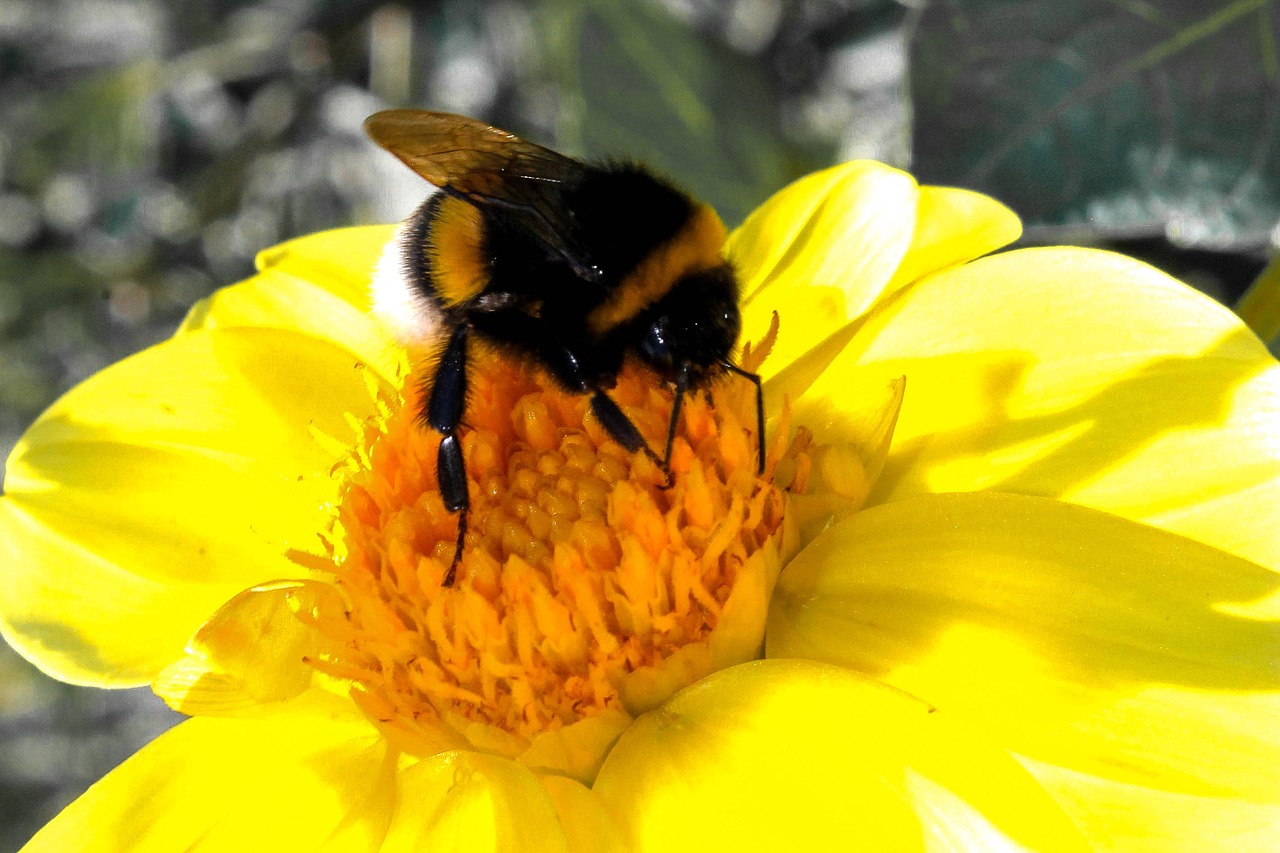The word “bumblebee” refers to several closely related species of bees that belong to the genus Bombus. Today, “bumblebee” is the preferred term in English for these insects, but older terms include “humblebee” and “dumbledor”; all of these names refer to the buzzing sound that the bees make. Bumblebees can be found throughout the Americas and Europe, as well as in temperate parts of Asia.
Anatomy
Like all insects, the body of a bumblebee has three sections: the head, the thorax, and the abdomen. They have a fuzzy appearance and have bright yellow and black stripes. Their striking appearance is an example of warning coloration. Females have a stinger at the end of the abdomen, and they will sting if they feel threatened. In humans, a bumblebee sting causes a lesion that is very painful for several hours but which heals over the course of several weeks. Unlike some other species of bees, a bumblebee’s stinger does not break off when it stings; that means that the wound is less serious, but it also means that the same bee can sting more than once. Bees cannot see the color red, but they can see ultraviolet, which is invisible to humans. For this reason, bees are attracted to shiny things.
Bee Colonies
Unlike most insects, bumblebees are social; their social groups are called colonies. A colony consists of no more than 400 individuals, and the colonies are usually located underground in abandoned rodent burrows. Every colony has one queen bee. The queen is much larger than the other bees in the colony, and she lays many eggs, from which larvae hatch. The other female bees in the colony, called worker bees, do not lay eggs. Instead, they collect nectar and bring it to the colony to feed it to the larvae. Male bumblebees are called drones; they are larger than worker bees, but smaller than the queen. Drones do not collect pollen or nectar, and they do not have stingers, although they defend themselves by threatening to sting, which is usually sufficient to make potential predators leave them alone.
Relationship with Humans
Like many other kinds of flying insects, bumblebees can be beneficial to humans, because they help with the pollination of plants, including food crops. They do not produce honey in sufficient quantities for humans to harvest their honey; the honey that humans eat comes from honeybees. The danger posed by bumblebees is their sting, which is less dangerous than that of some other stinging insects.

